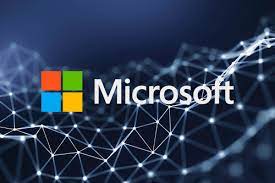Microsoft is actively working to optimize Windows 11 for a faster and smoother user experience, addressing concerns that the OS can be more resource-intensive than its predecessor, Windows 10. The company is taking a multi-faceted approach, focusing on improving existing features, actively seeking user feedback, and introducing new technologies to enhance performance.
Performance-Focused Updates and Enhancements
Microsoft is committed to improving Windows 11 performance, with the upcoming version 25H2 update poised to introduce several enhancements. One notable improvement is the optimization of File Explorer's Home tab, which now loads significantly faster. Load times have been reduced from 15-20 seconds to approximately 2-3 seconds on older PCs. This enhancement aims to streamline user interactions and improve overall system responsiveness.
The company is testing a new feature that intelligently throttles the CPU when it detects user inactivity. By monitoring usage patterns, the system can reduce CPU performance during idle periods, conserving energy and potentially extending battery life. Microsoft is likely to refine this functionality based on user feedback to balance performance and energy efficiency effectively.
Microsoft has also assigned experienced developers to improve the gaming experience on Windows. These improvements are not just cosmetic but address how the operating system works for games. On the performance front, the Xbox PC application will automatically terminate all non-essential game processes, freeing up RAM and optimizing gaming performance.
Feedback and Diagnostic Tools
Microsoft is actively seeking user feedback to identify and address system sluggishness. Participants in the Windows Insider Program are encouraged to report performance issues via the Feedback Hub under the "Desktop Environment > System Sluggishness" category. To facilitate this process, Microsoft has implemented a system that collects diagnostic logs when a PC experiences slow performance. These logs are stored locally and are only transmitted to Microsoft when users actively submit feedback through the Feedback Hub, ensuring user privacy is maintained.
Optimization Strategies
Users can also take several steps to optimize Windows 11 performance. Disabling unnecessary startup programs can significantly improve boot time and free up system resources. Managing background apps and closing unnecessary apps and browser tabs can also free up memory and improve performance.
Windows 11 includes built-in tools and resources to optimize memory and storage. Storage Sense automatically deletes temporary files and manages cached data to prevent disk clutter. Disk Cleanup frees up space by clearing temporary files and old update caches. Defragmenting and optimizing drives can also improve system responsiveness.
Keeping Windows 11 updated is crucial for optimal performance. Installing the latest updates ensures that users have the most recent bug fixes and performance improvements. Updating device drivers is also essential for hardware to function correctly and can result in noticeable speed improvements.
Adjusting visual effects can also improve performance, especially on older hardware. Disabling transparency, shadows, and animations can reduce the load on the system and make it feel more responsive. Changing the power mode to "Best performance" can also improve performance, especially for tasks like video editing, gaming, or running virtual machines.
PC Manager
Windows 11 introduces PC Manager, a tool designed to optimize and manage system resources efficiently. PC Manager offers a suite of features aimed at improving system performance, security, and overall management. The PC Boost feature optimizes memory usage and clears temporary files to improve system performance.
Gaming Optimizations
Gamers who want to prioritize performance have the option to turn off features like memory integrity and Virtual Machine Platform (VMP) while gaming, but should turn them back on when finished playing. The new full-screen mode transposes Steam's Big Picture mode for optimal use with a controller.
Through these dedicated efforts and new initiatives, Microsoft aims to deliver a consistently fast, fluid, and responsive experience for all Windows 11 users.

















